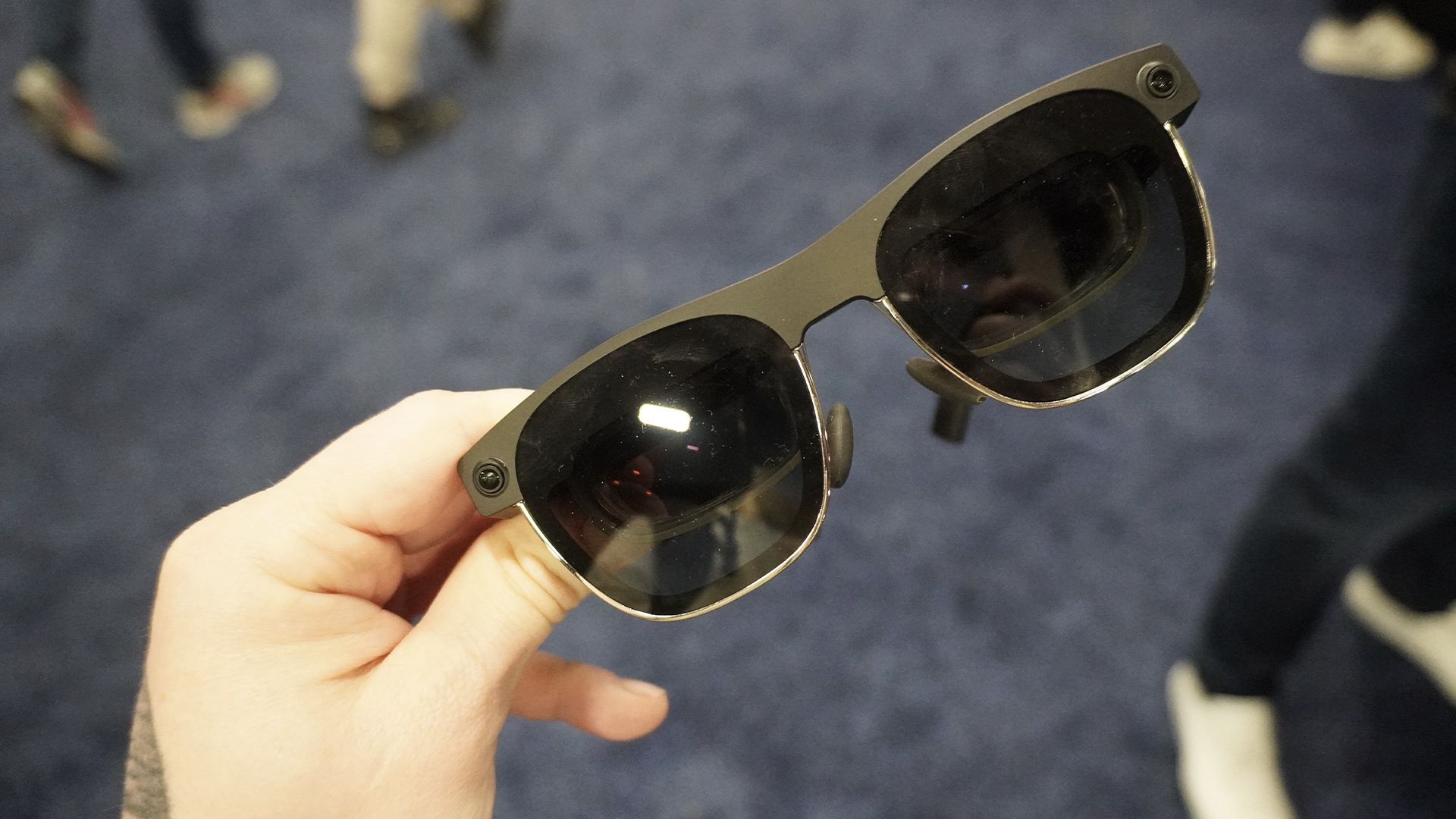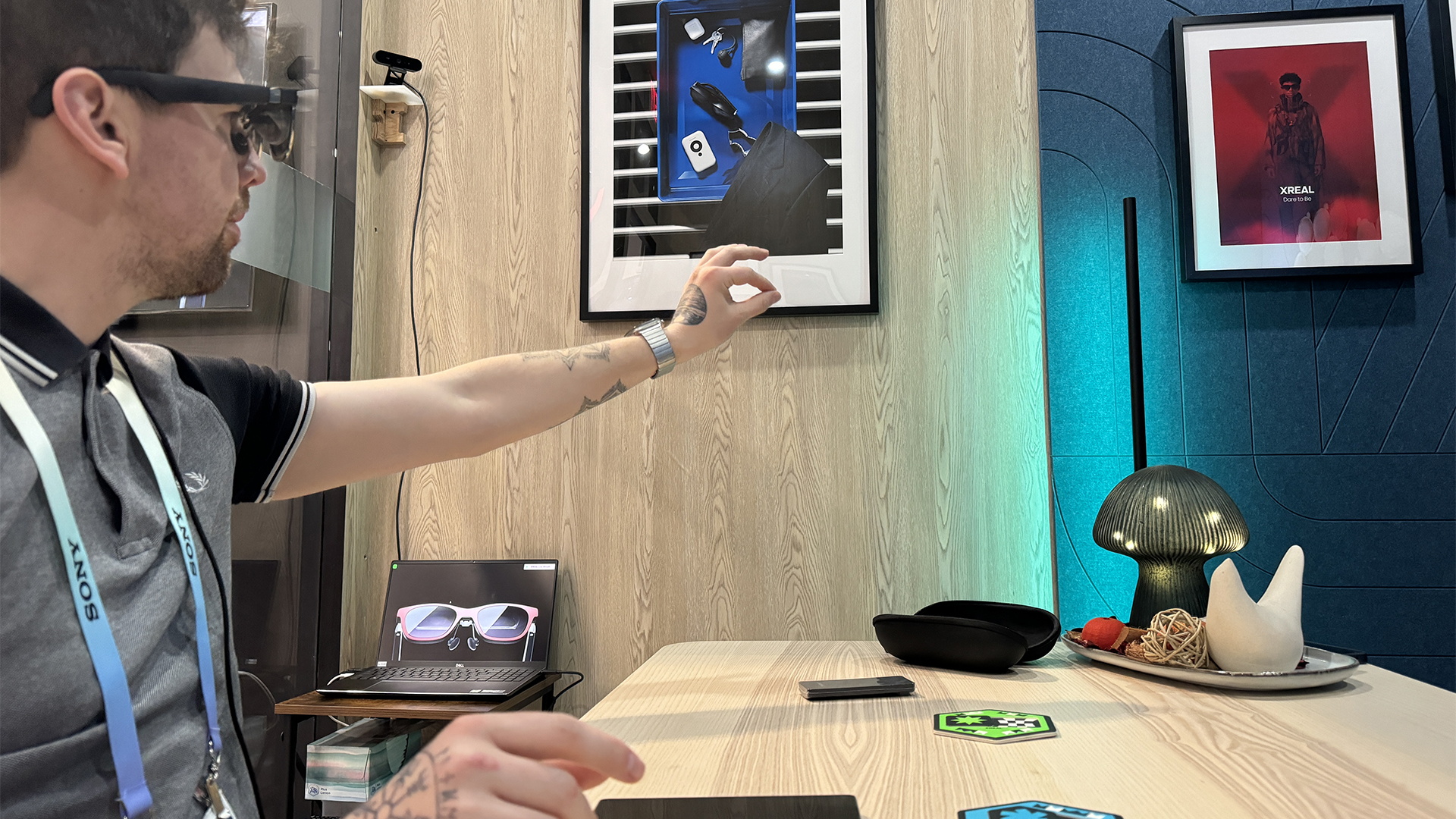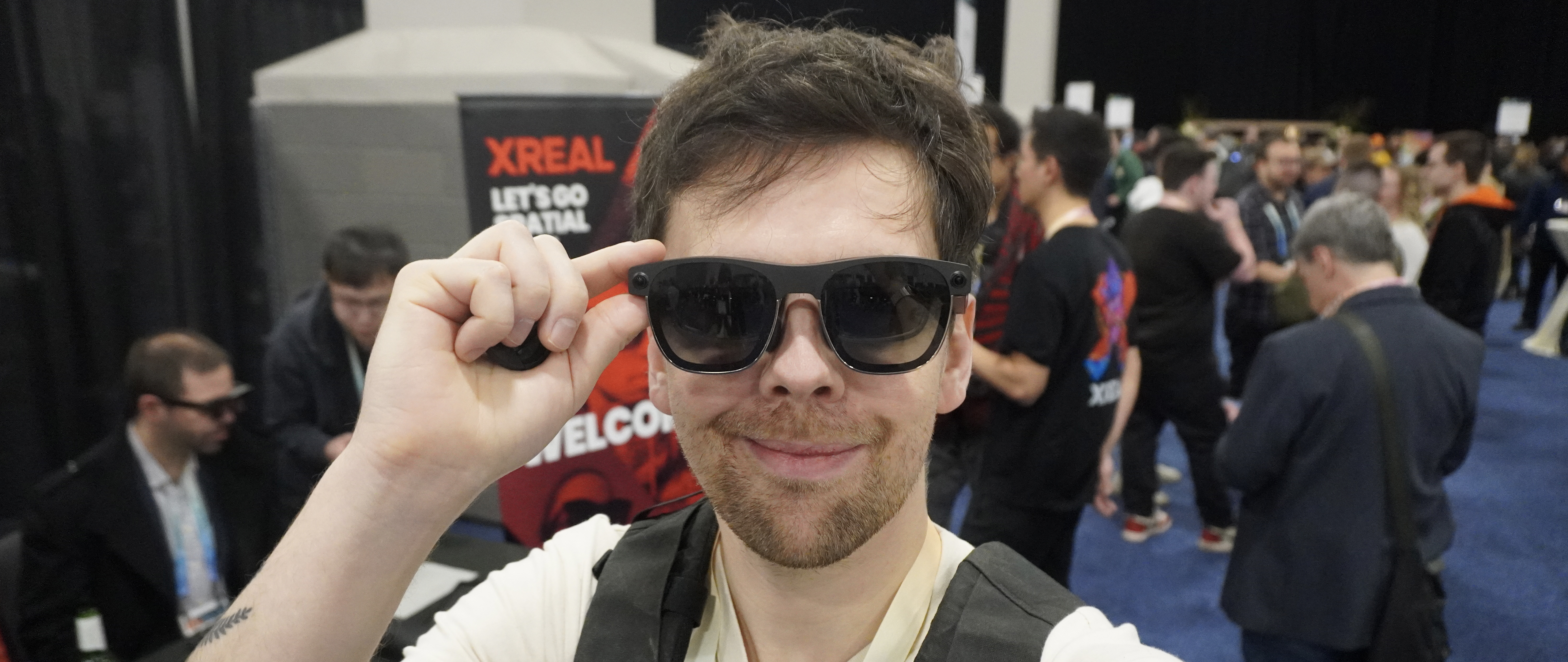Early Verdict
The Xreal Air 2 Ultra have formed a meeting point between the capabilities of a VR headset, and the portability and lightweight comfort of AR glasses — all packed into a premium pair of specs. It’s now just a matter of time for the developers to take advantage of the tech here.
Pros
- +
Gorgeous display
- +
6DOF positional tracking is here
- +
Comfortable to wear
- +
Premium design
Cons
- -
$699 is steep
- -
Hand tracking can be unreliable at times
Why you can trust Tom's Guide
With the Xreal Air 2, we get a sneak peek at spatial computing. The Xreal Air 2 Ultra have been positioned to take full advantage of this exciting future of UI interaction, all in a device that is so much smaller and lighter than the likes of Apple Vision Pro and Meta Quest 3.
There’s a reason why I chose these specs as one of my favorite gadgets of CES 2024, and that is a combination of this premium hardware and the future-proofed possibilities of packing full tracking into these with the 3D cameras.
But should you drop $700 on a future idea? Or is it more worthwhile waiting to see what developers will cook up before buying? Let’s get into it.
Xreal Air 2 Ultra: Price and availability
The Air 2 Ultra will be available in March for $699 — you can pre-order it now. This is quite a hefty jump up from the Xreal Air 2 and 2 Pro, but the technology inside puts it amongst possible competition like Apple’s $3,500 headset.
Xreal Air 2 Ultra: Design

Aesthetically, Xreal’s top of the line specs rock a similar Wayfarer style to its cheaper brethren — alongside similar features like electrochromic dimming lenses. But you’ll notice the weight is a touch heavier at 2.8 ounces, and everything looks a lot more premium here.
So what’s the secret? In one word: titanium. This gives the rim around the lenses a nice metallic look and feel, and makes them look rather good on your face, even though they are still just a little larger than life.
Even with the additional weight, the comfort remains unaffected. I can see anyone wearing these for long stretches of time without feeling the strain atop your ears. Plus when taking into account the fact that these are positioned to compete with far heavier and sizeable VR headsets, these are far more wearable.
Get instant access to breaking news, the hottest reviews, great deals and helpful tips.
Xreal Air 2 Ultra: Display & Sound
The visual experience inside is also getting a little bit of a boost too — those same vivid Sony Micro-OLED panels with a 1080p picture per eye, and up to a 120Hz refresh rate (90Hz in 3D). But the field of view has been upgraded from 46 to 52 degrees. It’s a small change that’s going to be important as spatial computing continues to grow.
Pair that with the electrochromic lenses for blocking out light sources, and you’ve got an experience that can be as immersive as you wish, or overlaid on your surroundings. The directional audio also seems to be a little louder in experience too. The listening experience is still pretty tinny, as Xreal can only pack tiny tweeters in here.
But whether you’re doing something more advanced when connected to an AR app or using these to project the image from the likes of your laptop or Steam Deck, the volume is dependable here.
Xreal Air 2 Ultra: AR features

Consumers can buy the Xreal Air 2 Ultra, but the company is positioning them as a device for developers. You see the hardware is there to pull off some big things: two 3D cameras that enable six degrees of freedom (6DOF) positional tracking.
The tracking itself is good, but not perfect, as the tattoos on my hand seem to be a bit of an obstacle for the team to overcome. Holding my hands palms up is practically flawless, but flip them over and they often disappear, and the color of the table can impact this too.
But the largest obstacle is that the software needs to be there to fully take advantage of it. The demos I tried were seriously impressive, but not perfect. One used a selection of switches the glasses recognized to flip between work and entertainment spaces, and interact with them using your hands.

Alongside this, I got to explore demonstrations of what Xreal’s recent new partnerships will bring to the table, such as Forma Vision holographic call (a really impressive 3D picture a great clarity on the speakers and mics), alongside Chinese car manufacturer Nio and its luxury passenger experience (a great way to start to remove the numerous screens from the cockpit).
Not only that, but the hardware needs to be there to unlock it fully. Xreal itself has confirmed that a “custom computing unit for the best AR experience” is indeed coming, with no set launch date.
Outlook

With the Xreal Air 2, we got a glimpse at spatial computing. But with Xreal Air 2 Ultra, we now have the hardware capability to make it happen. It’s now just a matter of time for the software to take full advantage of it.
You see, buying them right now is an investment in a future meeting point of the VR headset capabilities and AR portability — a relatively sound bet on what is coming soon from a company that is bagging investments left, right and center.
But to the general consumer snapping them up now, you won’t be able to do much more than a standard pair of Air 2 glasses. What you’re getting is a rather premium set of AR specs with a $700 price tag.
If you can afford to future proof yourself, go for it. But there is an argument here for waiting to see who jumps on the SDK.
More from Tom's Guide
- Ray-Ban Meta Smart Glasses review: Better in every way
- Apple Vision Pro hands-on: A mixed reality breakthrough
- Apple Vision Pro release date just confirmed for February 2

Jason brings a decade of tech and gaming journalism experience to his role as a Managing Editor of Computing at Tom's Guide. He has previously written for Laptop Mag, Tom's Hardware, Kotaku, Stuff and BBC Science Focus. In his spare time, you'll find Jason looking for good dogs to pet or thinking about eating pizza if he isn't already.

